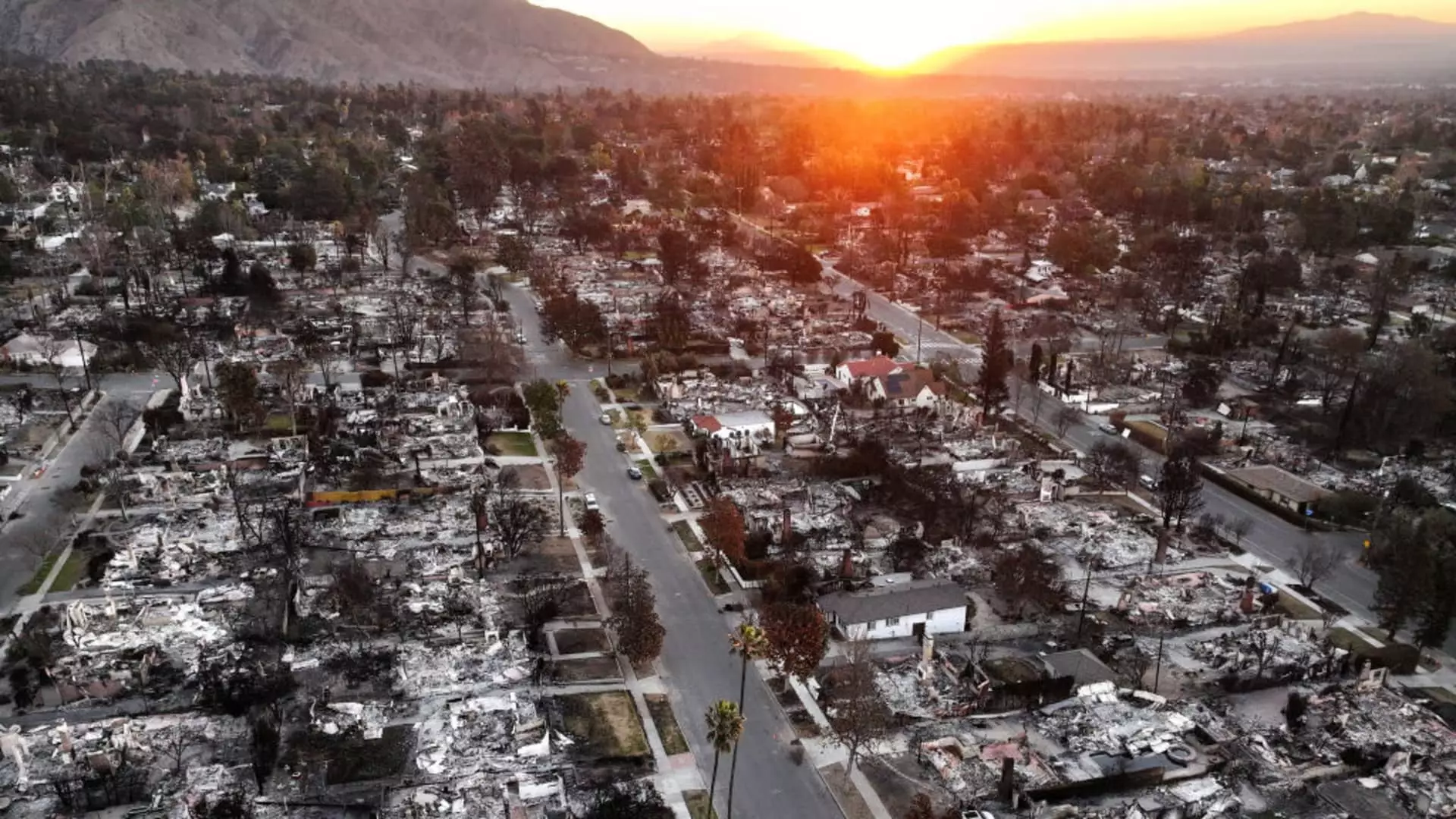The recent wildfires in Los Angeles have left an indelible mark on countless families, none more poignant than the story of Dr. Damon Raskin and his family in Pacific Palisades. Their home, a sanctuary, was reduced to ashes, a testament to nature’s unpredictable fury. In the midst of their shock and disarray, the Raskins made a resolute choice: they wished to rebuild. This decision embodies a profound mixture of heartache and resilience that many Angelenos are experiencing as they grapple with the devastating aftermath of rampant firestorms, which have ravaged not only Pacific Palisades but also surrounding areas such as Altadena. The emotional toll on these communities is undeniable, yet the eagerness to restore their homes highlights a deeply rooted tenacity and hope for the future.
The wildfires in Southern California have resulted in an unprecedented destruction of property. With more than 12,000 structures severely damaged or completely leveled, the task of reconstruction looms colossal. Preliminary estimates place the financial burden at a staggering $40 billion. However, as highlighted by Tom Grable, a division president for a major homebuilding firm, the challenge extends far beyond merely erecting walls. The groundwork involves transforming once-livable plots into safe and buildable areas, necessitating the removal of hazardous debris from thousands of acres. The scale is daunting, requiring a coordinated, multifaceted strategy from various stakeholders, including the government, private sector builders, and local authorities.
Recognizing the pressing need for coordinated rebuilding efforts, California Governor Gavin Newsom and Los Angeles Mayor Karen Bass have initiated executive actions aimed at expediting the recovery process. These measures include suspending certain regulatory protocols under the California Environmental Quality Act and accelerating permitting procedures. In essence, these directives are designed to cut through the bureaucratic red tape that can delay recovery, allowing homeowners and builders to focus on the essential task of reconstruction without unnecessary hindrances. However, while regulatory measures may streamline the process, the complexities involved in restoring a community that has suffered such devastation cannot be underestimated.
For many like Raskin, the experience of losing a home has brought a renewal of awareness towards fire safety. The implementation of new building codes mandating fire-resistant materials now stands front and center in the rebuilding discourse. With the benefit of hindsight, Raskin is actively exploring options for fire-safe materials, striving to fortify his future home against potential threats. The emergence of these new standards reflects an evolving understanding of fire risks in California, and as a result, homebuilders now have ample opportunity to innovate and improve infrastructure—an essential step toward enhancing community resilience against future disasters.
Large-scale homebuilding companies typically specialize in extensive developments rather than individual homes in devastated areas. However, they can offer potential solutions to displaced residents looking for affordable housing alternatives. While the upper echelons of the housing market might not see immediate rebounds, the role of smaller, local builders specializing in custom designs will become pivotal. These local craftsmen possess intimate knowledge of their communities, which can enable more personalized restoration efforts.
As competition grows among homebuilders during the protracted rebuilding phase, those with established expertise and understanding of fire-safe construction will likely gain a competitive edge. Companies that were once considered high-end custom builders may find themselves at the forefront of this transformation, poised to meet elevated demands with specialized solutions.
Navigating the financial landscape after such widespread destruction presents a formidable challenge for affected homeowners. Many find themselves entangled in the complexities of insurance claims during an already overwhelming time. With numerous insurers either withdrawing from California or tightening their coverage policies, the limited options available have forced many homeowners to turn to the FAIR Plan, a state-sponsored insurance backstop designed for those left without alternative coverage. This reality poses a multitude of challenges, as these policies often come up short in meeting reality’s demands, leaving many homeowners like Raskin to enlist public adjusters to reclaim losses inadequately covered.
As families begin the painstaking process of rebuilding lives and homes, the importance of community support becomes paramount. While Raskin and his family have temporarily relocated to a rental property in Santa Monica, they recognize that the road to permanent housing will be a lengthy one, likely spanning years. Yet, the spirit of collective resilience amongst Angelenos promises that they will not face this journey alone. As the state, local businesses, and individuals step forward to support those devastated by the wildfires, a renewed sense of hope emerges: recovery is possible, and stronger, fire-resilient homes will rise from the ashes. As rebuilding commences, both physically and emotionally, the unity and resourcefulness of affected communities will underpin the restoration of their vibrant lives.


Leave a Reply